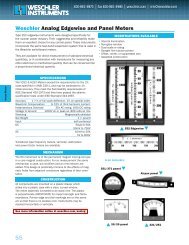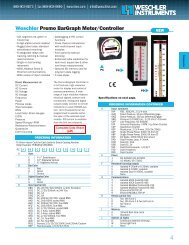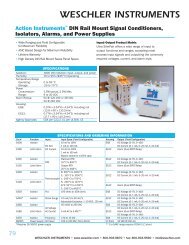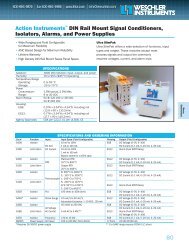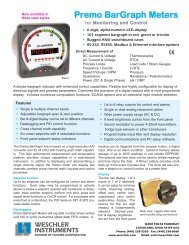WWW.MEGGER.COM
A practical guide to earth resistance testing - Weschler Instruments
A practical guide to earth resistance testing - Weschler Instruments
Create successful ePaper yourself
Turn your PDF publications into a flip-book with our unique Google optimized e-Paper software.
General CommentsIt is the purpose of this method to reduce that distance to the currentprobe, and this appears to have been achieved, but there are someadditional points to be noted. From the work which has been doneon the method, there are certain limits to the distance to the currentprobe. To comply, if the earthing system is in the form of a square, theminimum distance to the current probe should not be less than the sideof the square. On the other hand, the maximum distance should not betoo great. If it is, the resulting curve is very flat, and the intersection pointbecomes rather indefinite. Again, for a square system, this maximumdistance should not exceed twice the side of the square. For other shapesof earth-electrode systems, it is necessary to judge suitable minimum andmaximum values for the distance to the current probe.Fig. 29: Earth resistance curves for a substationGround test being performed on building ground using a DET3TCFig. 30: Intersection curves for Fig. 29. The center of the triangle formed by theintersection, Fig 30 gives the earth resistance 0.146 Ω60 1-866-254-0962 www.megger.com Getting Down to Earth 61



